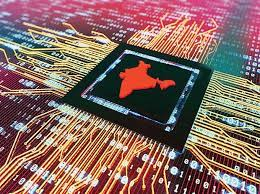CURRENT AFFAIRS
Get the most updated and recent current affair content on Padhaikaro.com
Bharat Net Project
- Vaid's ICS, Lucknow
- 05, Apr 2022

Why in News?
In Context
- The implementation of BharatNet has slowed and is likely to miss the 2025 completion deadline owing to a number of factors.
Progress made so far
- As of February 2022, only about 1.72 lakh of the initially targeted 2.5 lakh gram panchayats had been connected to the central grid under BharatNet.
- Of these, 1.5 lakh gram panchayats had been connected by 2017, within the first three years of the project being re-christened ‘BharatNet’.
About BharatNet Project
- It is a project envisioned by the Government of India to digitally connect all the Gram Panchayats (GPs) and Villages of India.
- It originally aimed to provide broadband services at 100 Mbps to around 2.5 lakh gram panchayats of the country.
- It is a highly scalable network infrastructure accessible on a non-discriminatory basis.
- It is the world’s largest rural connectivity scheme to be connected by the Optical Fibre network.
- Aim: To provide on-demand, affordable broadband connectivity of 2 Mbps to 20 Mbps for all households of India especially in rural areas.
- Implementing Agency: The project is being implemented by Bharat Broadband Network Limited (BBNL) through a Special Purpose Vehicle (SPV).
- Funding: The entire project is being funded by the Universal Service Obligation Fund (USOF), which was set up for improving telecom services in rural and remote areas of the country.
The scope of work under BharatNet PPP Project includes:
- Connecting the remaining unconnected GPs under BharatNet project (Phase 1 & Phase 2) and all the inhabited Villages beyond the GPs.
- Upgradation of the existing BharatNet Network from Linear to Ring topology.
- Operation and Maintenance (O&M) and Utilisation of the existing as well as the newly deployed network.
- Support: Central Public Sector in Undertakings (CPSUs) BSNL, RailTel, and PGCIL are providing the optical fibre network for broadband connections for the BharatNet project.
Benefits:
- It would reduce the cost of broadband services in India.
- It would have advantages like easy maintenance, faster implementation, and utilisation of the present power line infrastructure.
- It would provide internet connectivity to citizens especially in rural areas via Wi-Fi Hotspots.
- It would provide a boost to the economy and would generate around 10 crore man-days of employment during the rollout of the project.
- It will help in the expedition of government’s initiatives such as Make In India, Start-up India, Stand-up India etc
- It is considered to be the backbone of ‘Digital India’ aiming to reduce the digital divide between urban and rural India.
Facts for Prelims :
Near Field Communications (NFC)
Google Pay has recently launched a new feature in India, ‘Tap to pay for UPI’, in collaboration with Pine Labs.
- The feature makes use of Near Field Communication (NFC) technology.
What is Near Field Communication (NFC)?
- It is a short-range wireless connectivity technology that allows NFC-enabled devices to communicate with each other and transfer information quickly and easily with a single touch — whether to pay bills, exchange business cards, download coupons or share a document.
- It transmits data through electromagnetic radio fields, to enable communication between two devices.
- Both devices must contain NFC chips, as transactions take place within a very short distance.
- NFC-enabled devices must be either physically touching or within a few centimetres from each other for data transfer to occur.
- In 2004, consumer electronics companies, Nokia, Philips and Sony together formed the NFC Forum, which outlined the architecture for NFC technology to create powerful new consumer-driven products.
- Nokia released the first NFC-enabled phone in 2007